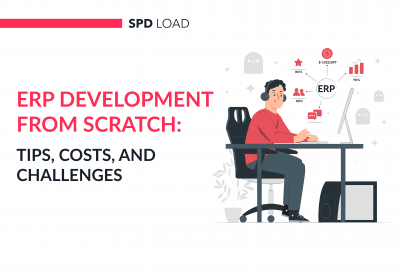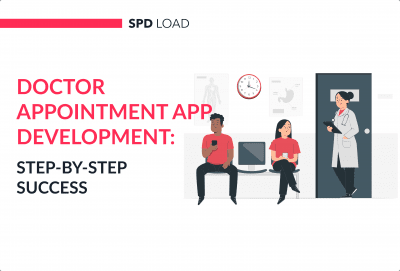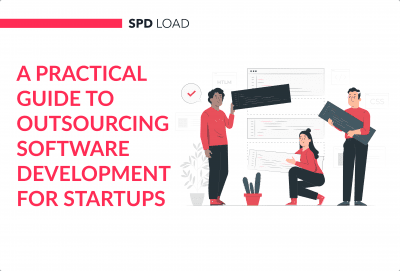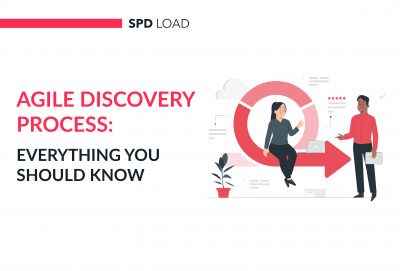How Long Does it Take to Build a Website
- Updated: Nov 12, 2024
- 8 min
Building a website takes time. In this comprehensive guide, we’ll break down how long it takes to create a site based on its type and complexity.
We’ll also cover key factors that influence the time taken, tips to reduce revisions, and planning your timelines and budget.
By the end of this article, you’ll know what to expect when building a website and how to get it live faster.
Wondering do I need a website for my business? Find out why the answer is almost always yes.
Let’s dive in!
Elevate your brand with our custom website design services — let's build your dream site together!
How Long Does It Take to Make a Website?
If you plan to develop a website with the help of a web development company, then the website-building process will have different stages.
They include product discovery service, website design, development, and website improvement phases. Each stage has its dedicated time and is iterative in nature.
It takes anywhere from 150 to 500 hours to develop a website, depending on its complexity.
| Type | Required hours | ||
| Design | Development | Total | |
| Landing Page | 40 | 40 | 80 |
| Corporate site | 60 | 80 | 140 |
| Simple Web App | 120 | 480 | 600 |
| Average Web App | 200 | 960 | 1160 |
| Complex Web App | 300 | 1500 | 1800 |
As listed above, there are websites and web apps. Both of these vary based on a number of factors.
Choosing between a simple website and a web app depends upon your target audience.
A basic website and landing pages take less time as the number of features in these is less.
On the other hand, web apps such as YouTube or SaaS platforms like Canva take more time as they are packed with top-end features.
Moreover, web apps have additional functionality as compared to websites.
Also, the development and design processes for these projects are more complex than that of a basic HTML and CSS website.
Learn more about the web application development process in our recent blog.
Let’s take a look at a detailed overview of pricing factors.
Key Factors That Impact Website Build Times
The average hours to build a website mostly depend on three factors:
- Business goals to achieve;
- The complexity of the concept;
- The level of a development team;
Let’s take a look at the aspects that affect the average time to create a website from scratch.
Website Goals
The key point that defines the web development timeline is the goal of a future website. Let’s find out more about options.
| Goal | Description |
| To launch marketing | The end goal of almost every corporate website is marketing. If you are a marketing agency or a software development company, you will need a website to showcase your services and attract clients. A website with a marketing goal will take less time as it will not need any type of special customization. Moreover, user interaction with such websites is also limited. A simple WordPress website will be enough. Keep in mind that websites made for marketing require more effort on the SEO (search engine optimization) side. Social media, domain name, and proper optimization of the CMS (content management system) are also important factors to consider. Considering custom WordPress website development? We explain the benefits and what it takes to get started. |
| To launch a web product | The core motive of a web app is to provide the user with the required utility by interacting with it. Web apps can easily run on any browser and are easy to maintain. They are cross-browser-friendly. Hence, web apps can take more time to build. Since the objective is to create a custom website, there will be a ton of web design elements and features that require time. For instance, Google Docs is a web app that allows you to edit, share and download docs. YouTube allows you to watch, save, download, and upload videos. Udemy has a plethora of courses that you can take and learn. For such web apps, you’ll need to partner up with a dedicated development team that has at least one web designer in their team. They will take care of the user experience and user interface, for example, for a homepage and other factors that affect how the website looks. These web apps take months, and plenty of UX redesign iterations to create as they have more features and require more user interaction. There are mockups, wireframes, and a lot of revisions. Sometimes, it also becomes costly for a small business. |
The business goals of the website determine the business logic. And the business logic determines the complexity of web development.
Let’s understand this relationship further. 
Business Logic Complexity
The second critical factor that affects the web development timeline is the complexity of business logic. In other words, how many roles and features your web project will have.
The more complex the logic is, the more time-consuming and costly the website project becomes.
Now, the complexity of the site or a web app is dependent on various components.
Component 1. Number of Roles
The number of roles in a website or a web app highly affects the cost and time needed to build it.
| Website | Web application |
| For instance, a website will have 1 or 2 roles. One will be the user who may send a request form. The other one will be the admin or the owner of the site, who will respond to that email. Both will have different permissions to access site data. For example, the user can only read the information. However, the admin can read and revise the content as needed. | On the other hand, a web app can have multiple roles. For instance, Trello, a work management tool, can be used by various users simultaneously. Users have different access rights, which means multiple roles. An app like Trello that has multiple roles can take around four months. |
Component 2. Number of Features
When it comes to building a website, the number of features drastically affects the time it takes.
| Website | Web application |
| A website may have countless features. For instance, if you are selling a solution via your website, like antivirus software, it will require a payment gateway, which will take more time. A 10-15 page site might be ready in a few days, weeks, or months, depending on the site’s features and complexity. Although the number of pages is not a decisive factor here, it plays a crucial role in the entire process. Even though you can start a new site with templates and plugins, taking that new website to the next level will require you to develop customized solutions. As an example, you can check the website redesign case study completed by Spdload. It took us six months to redesign the entire website. We integrated various fresh features into it. | Web apps are mostly eCommerce apps, eLearning apps, Social networks, or management tools. These web apps are integrated with special features that elevate the cost and time to build the app. For example, AirBnb is a web app with features like house listings, location, search function, payment gateways, etc. All of these are top-end features that increase the cost of building the app. A web app like Airbnb may take around six months to complete. GetReinvented is an online fitness platform developed by Spdload. The web app was developed in 1200 hours. It has various features like video on demand, payment via PayPal and Braintree, and many more! |
Component 3. Complexity of Features
The answer to how long it takes to build a website is not solely dependent on the number of features. It also depends on how complex the feature is.
Here are some factors that increase the complexity of the feature.
| Amount of data to use | The number of integrations |
| When it comes to data usage, the app or site needs to be optimized. However, there are some features that increase data consumption. Features like in-app purchases, in-app ads, video playbacks on the site, etc., boost data usage. Playing an HD video on YouTube consumes more data. Hence, the utility of HD playback in a web app will require more development time. If your site has more videos, it will surely increase the amount of data used. | There are various types of integration in a web application or a website. For instance, in the case of eCommerce web apps, you need to integrate payment gateways to accept payments. The more gateways there are, the more complex the app will be. Thus, more time will be needed for development. Map integrations are required on a corporate site to help clients find offices easily. This will again increase the time needed to develop a site. Hence, the complexity of the feature affects the answer to how long it takes to create a website. Discover eCommerce startup ideas that fit the latest trends and customer demands. |
Another important point that complements the relationship between business goals and business logic is the level of the team.
The level of designers and developers determines their ability to bring your website to life. In addition, it sets the time and money limits.
Wondering about the cost of hiring a software developer? We break down what you need to know.
Let’s look at the details. 
Team Experience
The expertise of the team you work with also affects the time required to build a site. No matter if you are building a site or a web app, you will need the following members of your team:
- Project manager
- Business analyst
- UX/UI designer
- Markup developer
- Backend web developer
- Frontend web developer
- QA Tester
- Marketing manager (on-demand)
The website building process goes through various phases if you have hired a professional agency to do the job for you.
Let’s find out the connection between the development process and the required web design and web development hours.
How Web Development Stages Affect Timelines
Here you’ll find a step-by-step list of web development stages and how do they impact the required hours of development.
As an example, we’ll consider an average corporate website:
- Discovery phase. This phase analyzes all the factors that affect the answer to how long it takes to design a website. The stage involves making a plan for creating a great website that will be put into action. Typically, it takes about 40 hours or one week.
- Design phase. The design phase of the site-building process takes most of the time. 88% of users are less likely to return after a bad user experience. Hence, it is necessary to allow time here. You need to allow at least 80 hours or two weeks to do this.
- Development phase. The coding phase takes around 240 hours or three weeks if the site is simple and you have a professional team. In contrast, it may also take months if the site is complex.
- Review phase. This stage of the website-building process takes around 40 hours or one week. It can be less or more based on the number of stakeholders. If there are more stakeholders, the volume of input will also be higher, and so will the time.
- Migration and launch. There is no fixed time for this. It entirely depends on the site’s review period. Once the user is satisfied with the output, you can roll out the site.
Overall, we can say that a website will take a minimum of 4-6 weeks to build. If the specifications for the site are more complex, it may even take longer. 
Want to Build a Custom Website?
Now that you understand what affects website build times, you can either build your website yourself or work with our creative agency.
If you need an experienced team to support you, let’s talk. For over ten years, we’ve collaborated with startups and corporations, assisting them in reaching their website and business objectives.
Now, it’s time to tackle that website development for you!
With cybersecurity risks on the rise, bot attack prevention has become essential for online security.












